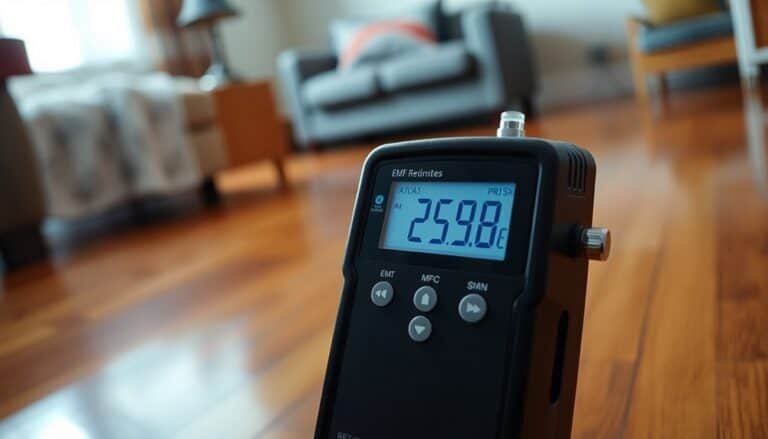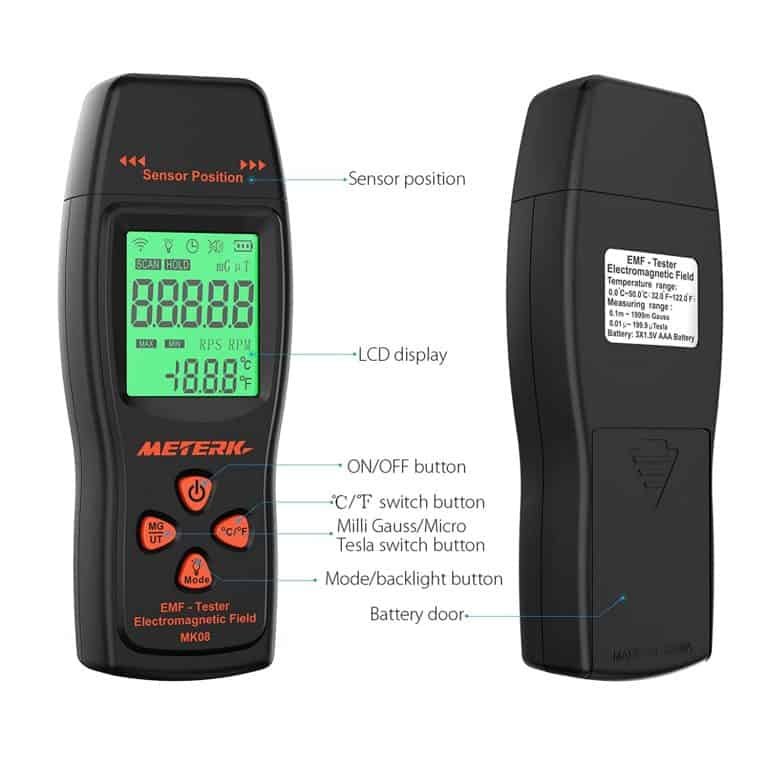How to Find Hidden EMF Sources in Your Home
To detect hidden EMF sources in your home, start by identifying usual suspects such as cell phones, Wi-Fi routers, and appliances, and use tools like digital EMF detectors and magnetic field testers to measure fields. Familiarize yourself with electric fields (volts per meter) and magnetic fields (teslas or gauss), and also check for dirty electricity from devices like dimmer switches and smart meters.
By implementing these strategies, you’ll gain valuable insights into reducing exposure effectively.
Disclaimer: As an affiliate, I may collect a share of sales from the links on this page.
Common Sources of EMF in Everyday Life
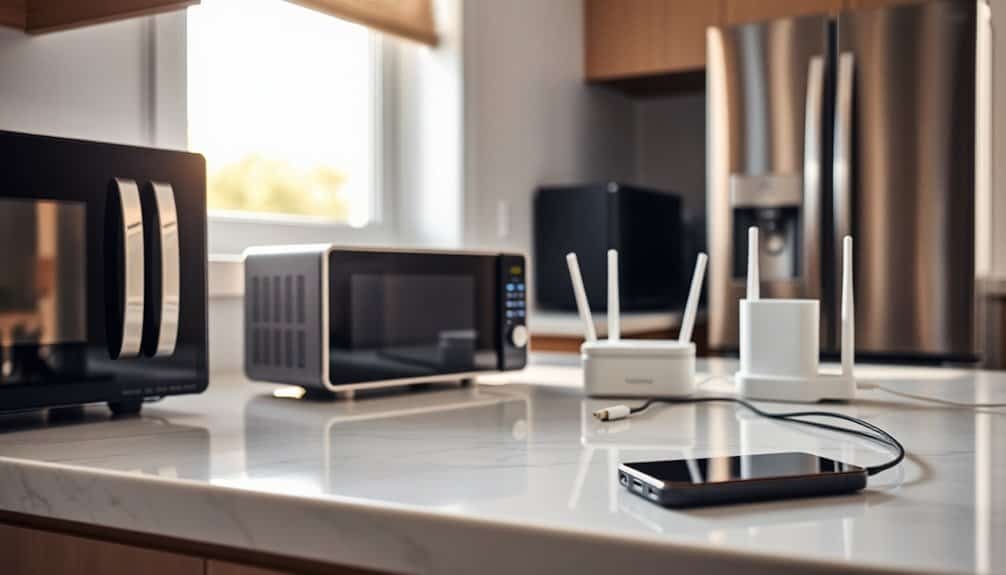
Everyday life exposes you to various sources of electromagnetic fields (EMF). Cell phones and Bluetooth devices emit EMF, impacting tissues when held close.
Wi-Fi routers and smart meters constantly transmit signals, while household appliances like microwaves and televisions generate notable EMF levels during use. Sources of EMF in households include both the appliances we use and the electric house installations that contribute to overall exposure.
Power lines and electrical wiring create low-frequency EMF, varying by location, and EMF hotspots can often be found near these sources. Specific appliances contribute to this exposure: microwaves produce over 70 µT, washing machines exceed 30 µT, and kettles can exceed 15 µT.
Smart devices amplify overall EMF levels, especially in homes with multiple active electronics, which necessitates awareness of your environment to manage potential exposure effectively.
Tools for Detecting Hidden EMFs
Identifying hidden sources of electromagnetic fields (EMF) requires specialized tools that can accurately measure and analyze these invisible emissions. Magnetic field testers gauge magnetic fields from devices and power lines. Digital EMF detectors provide handheld convenience for home use. The SISCO models, like the SISCO-EFD-WT105, are designed for accurate magnetic field measurements, making them excellent choices for both professionals and home users. Electromagnetic field meters measure electric and magnetic fields simultaneously. Triaxial field probes detect fields in three dimensions. ELF meters focus on extremely low frequency levels, perfect for monitoring power lines. Additionally, many of these devices can measure ELF waves, which are commonly emitted by household appliances and power lines.
Look for features like frequency range, measurement units, and memory functions. Many models are user-friendly, portable, and feature ergonomic designs, ensuring ease of use when detecting EMF sources in various environments.
Understanding Electric and Magnetic Fields
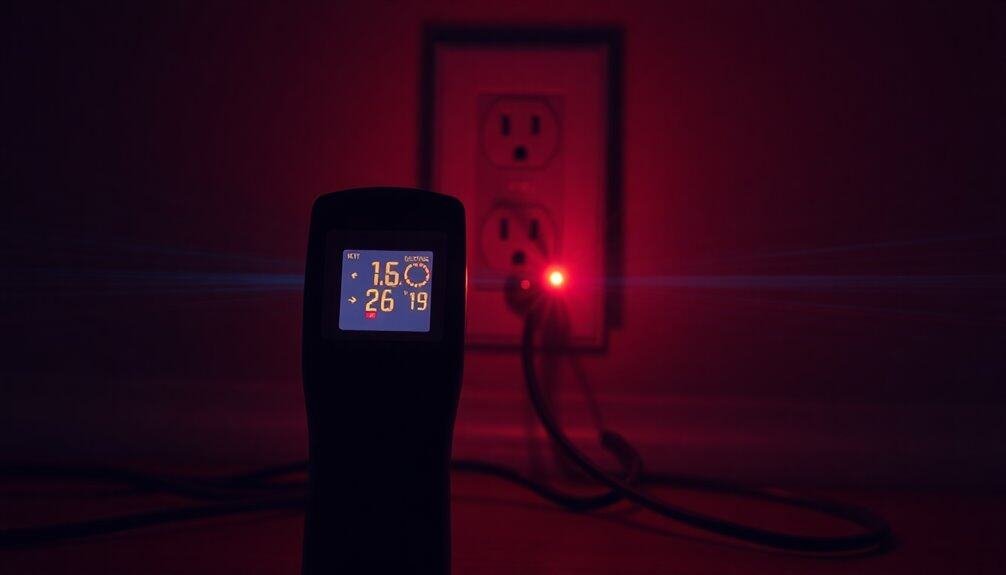
Electric and magnetic fields (EMFs) are fundamental aspects of electricity that impact both our daily lives and the environment. Electric fields arise from voltage or electric charge and are measured in volts per meter (V/m). In contrast, magnetic fields develop from the flow of electricity within a conductor, measured in teslas or gauss. Common sources in homes include power lines, wiring, and appliances such as refrigerators and ovens. Electric fields are produced by voltage levels and current flow which affect field strength, diminishing with distance. Understanding these fields is essential for recognizing potential exposure and its implications for health and safety, as changing electric fields can create magnetic fields, influencing the surrounding environment.
Identifying Dirty Electricity in Your Home
Hidden sources of dirty electricity can considerably affect your home’s environment and electrical systems. Common culprits include dimmer switches, which create electromagnetic interference, and appliances like microwaves and refrigerators, contributing to increased noise.
Smart devices, such as smart meters and Wi-Fi routers, also add to these levels. To identify dirty electricity, use microsurge meters or dirty electricity line EMI monitors. Devices like Graham-Stetzer filters provide readings of electrical noise.
Monitor specific appliances with smart plugs. Finally, make adjustments, like replacing dimmer switches or turning off unnecessary devices, to help mitigate these disruptive electrical interferences in your home environment.
The Role of Professional EMF Consulting
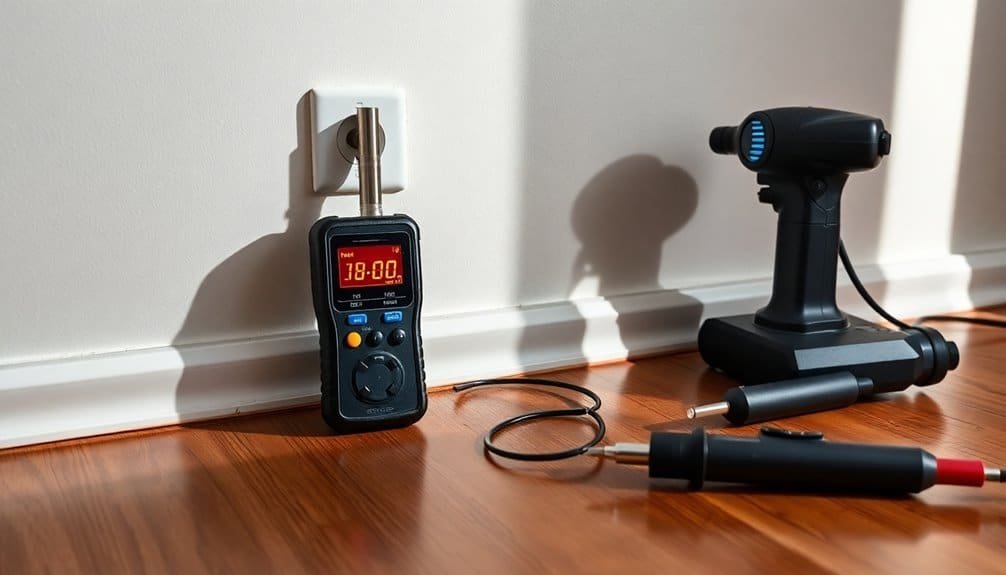
The role of professional EMF consulting is essential for understanding and managing electromagnetic field exposure in various environments.
Certified consultants conduct thorough assessments using advanced, calibrated equipment, ensuring accurate measurements of EMF levels. They offer tailored mitigation strategies to address specific sources of exposure, aiding compliance with local and international regulations.
Services include EMF testing, risk assessments, and solutions for electromagnetic interference. Consultants provide educational support, guiding safe technology practices.
When selecting a consultant, consider their reputation, compliance with standards, and collaborative approach.
Professional assistance makes it easier to identify hidden EMF sources and implement effective solutions.
Practical Tips for Reducing Exposure
Reducing your exposure to electromagnetic fields (EMFs) involves a combination of practical measures and smart choices.
Implement these tips to effectively minimize your exposure:
- Use Wired Connections: Switch to wired internet and phone connections to lower EMF emissions from wireless devices.
- Turn Off Devices: Unplug your appliances and electronics when not in use to reduce energy consumption and EMFs.
- Safe Sleeping Environment: Remove electronics from your bedroom to limit EMF exposure while you sleep.
- Low EMF Bulbs: Install low EMF light bulbs to help regulate EMF levels in your home.
Adopting these strategies can markedly enhance your well-being.
Advanced Mitigation Techniques and Solutions
When you aim to effectively reduce your electromagnetic field (EMF) exposure, advanced mitigation techniques and solutions are essential.
Start with EMF detectors like the Milerd HiRange to pinpoint radiation sources. Consider infrared thermography for temperature-based detection.
Use shielding materials, such as copper fabric, to block emissions from devices. Position Wi-Fi routers strategically to minimize exposure.
Invest in EMF-blocking paints and window films for home protection. Enhance your diet with antioxidant-rich foods, particularly purple vegetables.
Prioritize stress reduction and maintain good hydration. Stay informed about new technologies and EMF-reducing appliances for ongoing mitigation effectiveness.
Frequently Asked Questions
How Can I Tell if My Neighbors’ Devices Affect My EMF Levels?
You can assess your neighbors’ EMF impact by measuring levels near shared walls and identifying devices like routers. Distance to the source matters, so keep your EMF meter handy to track variations in exposure.
Are There Specific Plants That Help Reduce EMF Exposure Indoors?
You’ll be amazed at how certain plants, like cacti and snake plants, can magically reduce EMF exposure indoors! They purify the air and bring life to your space while quietly battling those pesky electromagnetic waves.
What Building Materials Can Block EMF Radiation Effectively?
To block EMF radiation effectively, use materials like aluminum foil, copper mesh, or specialized window films. Thick, dense materials such as cement and flexible options like G-iron ArmoFlex also provide excellent shielding for your space.
How Often Should I Check for EMF Sources in My Home?
You should check for EMF sources regularly, especially when introducing new devices or changing your home’s layout. Seasonal variations may affect levels, so it’s wise to reassess periodically for best safety and comfort.
Can Pets Be Affected by EMF Radiation, and How?
Studies suggest that dogs exposed to higher EMF levels have considerably increased odds of developing lymphoma. Your pets might show behavioral changes, fatigue, or anxiety due to EMF radiation, so monitoring their environment is essential.
Conclusion
Discovering hidden EMF sources in your home is crucial for a healthier environment. Use detection tools to expose the invisible energy around you. Understanding electric and magnetic fields helps assess risks, while identifying dirty electricity clarifies the issue. Implement practical reduction strategies and advanced mitigation techniques to protect your home. Awareness and action are your best allies in minimizing EMF exposure and ensuring well-being.



